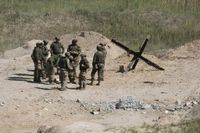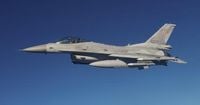In the heart of Europe, the mood has shifted. Once content with post-Cold War peace dividends, European governments are now racing to bolster their defenses in the face of mounting Russian aggression and uncertainty about the future of American military support. The numbers tell a story of urgency: according to the European Defence Agency (EDA), European countries are projected to spend a staggering 392 billion euros on defense in 2025, an 11 percent increase from last year and a 19 percent jump from the year before that. The upward trend is unmistakable, and it’s not just about spending for spending’s sake.
At the NATO summit in The Hague this past June, the alliance’s 23 European Union member states—out of 27 total—committed to a new, ambitious target: 3.5 percent of their gross domestic product (GDP) on core defense, plus another 1.5 percent on related infrastructure and cybersecurity. That’s a total of 5 percent of GDP earmarked for security, a historic leap from the 1.9 percent standard set just a few years ago in 2019, when defense spending hovered at 343 billion euros. This shift, as the International Institute for Strategic Studies (IISS) reported on September 3, is driven by a sense of looming peril and the very real possibility that the United States may soon scale back its military presence in Europe by as much as 30 percent.
The IISS’s 106-page report paints a sobering picture. European nations, it warns, could be staring down a trillion-dollar rearmament bill as they scramble to close gaps in everything from missile defense to intelligence gathering. The report doesn’t mince words: “Chief among the reasons for this greater urgency are Russia’s military threat and uncertainty over the United States’ commitment to defending European allies.” The timeframes for a potential direct threat from Russian forces range from two to five years, according to strategic assessments cited by the IISS. Meanwhile, the Pentagon’s Global Force Posture Review, expected this month, could see Washington shift its focus—and its troops—from Europe to the Asia-Pacific region.
Rising military budgets, however, are only part of the story. European leaders recognize that money alone won’t buy security. As the IISS notes, “Europe’s defense industries continue to face challenges in increasing production fast enough, while many European armies cannot meet their recruitment and retention targets.” Integrated air and missile defense remains a particular vulnerability. While some countries, like France and the UK, possess advanced cruise missile capabilities, only a handful have ground-based long-range precision-fire systems, and Europe’s aerial shield is not yet ready for the scale of the Russian threat. Philip Breedlove, former NATO supreme commander in Europe, told RFE/RL, “You see what has happened in big cities in Ukraine. This also would happen in some of the big cities of Europe.”
Against this backdrop, NATO Secretary-General Mark Rutte has been crisscrossing the continent, rallying support and thanking allies for stepping up. On September 2, Rutte visited Luxembourg, a founding NATO member with a unique set of challenges. Luxembourg’s defense contribution, Rutte confirmed, is calculated against its gross national income (GNI) rather than GDP—an arrangement reflecting the country’s unusual economy, where a significant portion of workers contribute to GDP but spend their income abroad. This “special” deal, as Rutte’s predecessor Jens Stoltenberg described it, means Luxembourg’s 3.5 percent core defense share is measured differently, but the country is on track to reach 2 percent of its GNI in total defense spending for the first time in decades by the end of 2025.
Prime Minister Luc Frieden made clear that Luxembourg’s motivation isn’t just about buying weapons: “We want to do that because we want to be a loyal ally of NATO.” With a small army of just 900 personnel and over 40 percent of its residents being foreign nationals, Luxembourg still manages to spend $1,780 per person on defense, according to the latest NATO data. Since 2022, it has provided over 250 million euros in military aid to Ukraine, including armored vehicles, drones, and ammunition, and it will soon join NATO’s new Prioritised Ukraine Requirements List (PURL) initiative, which has already funneled 2 billion dollars in urgent aid to Ukraine in just a few weeks.
Estonia, too, has been singled out for its leadership. Meeting with Estonian President Alar Karis in Brussels on September 3, Rutte praised the Baltic nation’s near-attainment of the 5 percent GDP defense benchmark and its unwavering support for Ukraine. Estonia hosts UK-led Forward Land Forces, supports NATO’s Baltic Air Policing mission, and has committed to providing at least 0.25 percent of GDP in annual military aid to Ukraine. “Estonia is leading the way. You are already close to this benchmark, and plan to go even further in the coming years,” Rutte stated, underscoring the importance of continued investment and transatlantic cooperation.
The threat from Russia is not abstract. Just days ago, a plane carrying European Commission President Ursula von der Leyen lost GPS navigation over Bulgarian airspace—a suspected result of Russian jamming. The plane landed safely, but the incident underscored the reality of so-called “hybrid threats.” As Rutte put it at a press conference in Luxembourg, “I have always hated the words hybrid because it sounds so cuddly, but hybrid is exactly this jamming of commercial airplanes, with potentially disastrous effects.” He warned that with the latest Russian missile technology, the difference in warning time between Lithuania and Western European capitals like Luxembourg, The Hague, or Madrid is now just five to ten minutes. “We are all on the eastern flank now, whether you live in London or Tallinn.”
These threats come as European governments juggle other pressing demands—health, education, social benefits—but the consensus is clear: the cost of inaction could be far greater. The EU has responded by making up to 150 billion euros in loans available to member states for military strengthening, and Eurozone debt rules have been relaxed for defense spending. US President Donald Trump, who once lambasted European NATO allies for low defense budgets, has now praised their renewed commitment, especially after the June summit’s 5 percent pledge.
Yet, as the IISS report cautions, building capacity will require more than just deep pockets. Europe must overcome slow procurement, a shortage of surveillance and intelligence aircraft, and a lack of “sovereign hyperscale cloud-computing capacity.” Political decisions will be tough, and financial risks are significant, but the stakes—European security and sovereignty—could not be higher.
As NATO and European leaders look ahead, the message is unmistakable: vigilance, investment, and unity are the order of the day. With Russia identified as “the most significant and direct threat to Euro-Atlantic security,” as Rutte told Estonia’s president, Europe has little choice but to rise to the challenge—no matter how steep the price.





